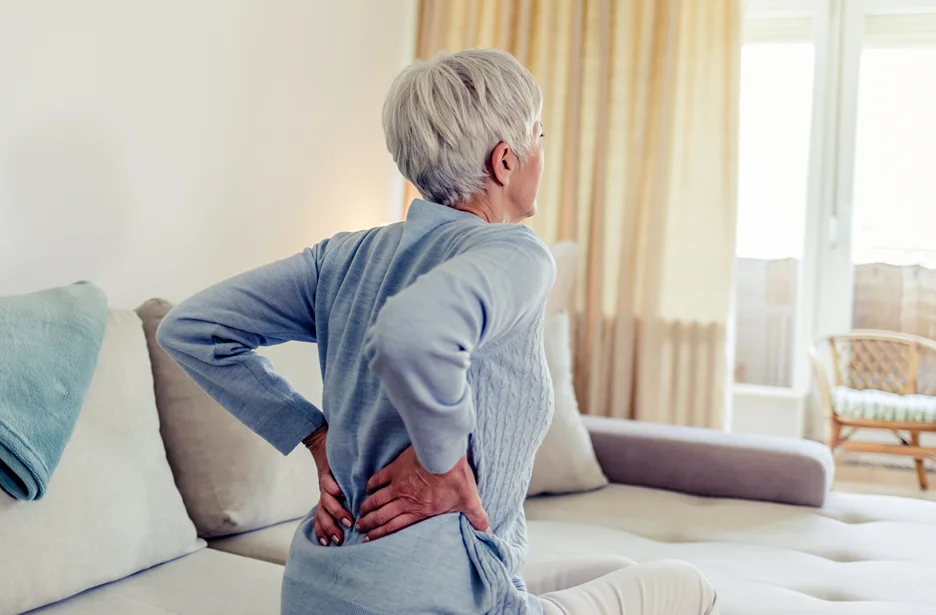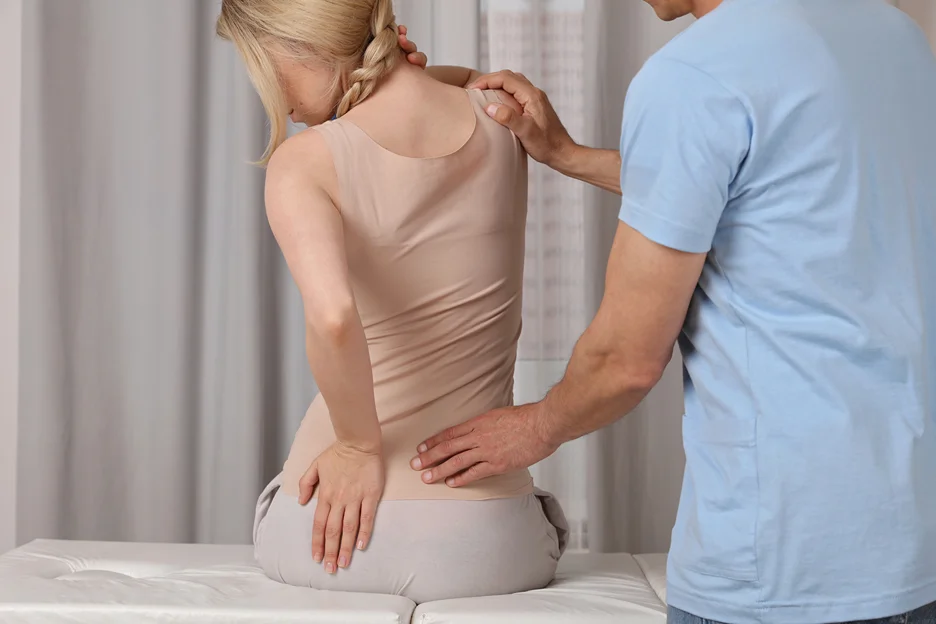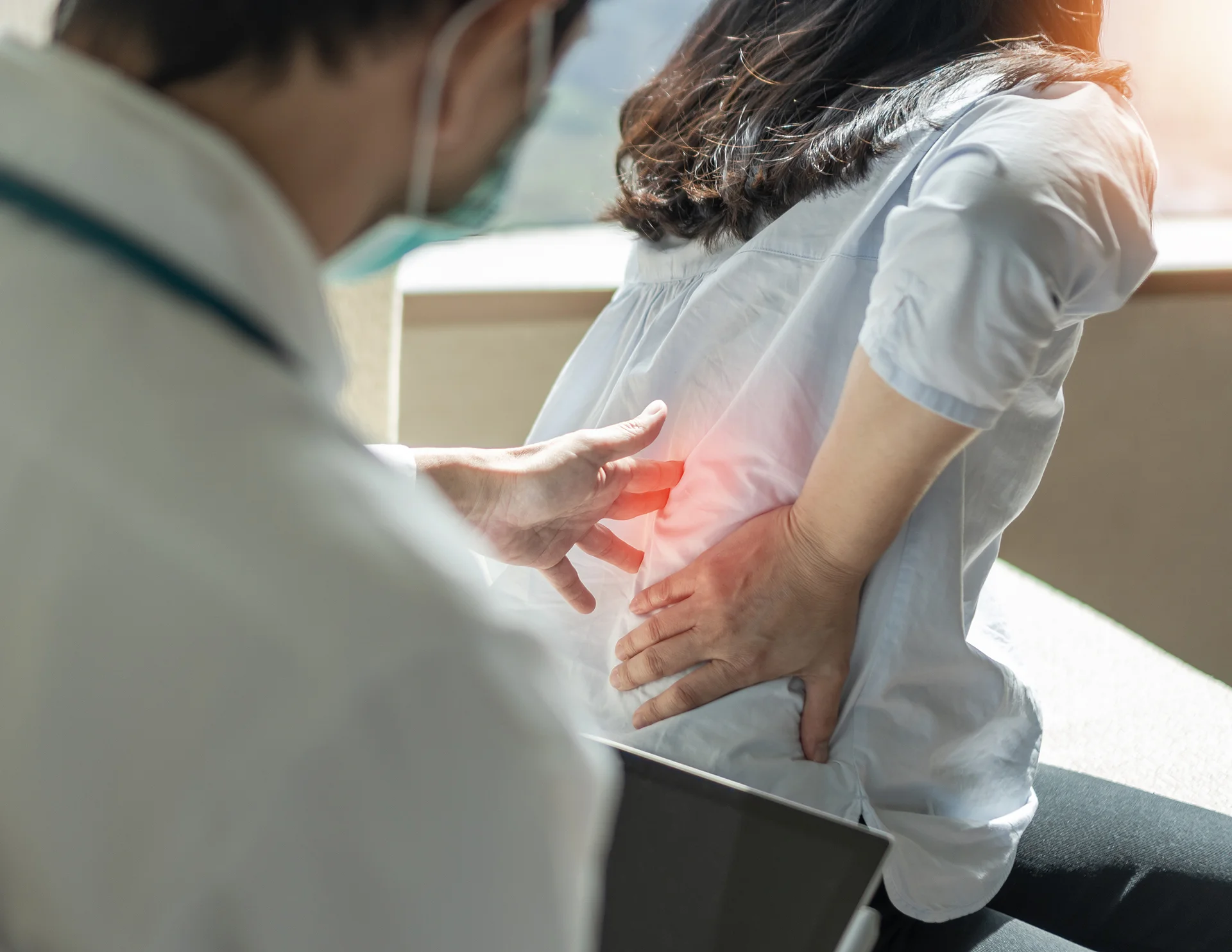Back pain is a burden shared by many, but it impacts women even more than men. In the US in 2019, 40.6% of women are more prone to experience back pain compared to 37.2% of men. If you’re one of the millions of women suffering from lower back pain, you don’t have to just grin and bear it.
Understanding the common causes, getting properly diagnosed, and exploring the wide range of treatment options now available can help you find lasting relief. With insight into why female anatomy and hormones make women more prone to back issues, you’ll be able to know the most suitable treatment options for you.
What’s Causing All the Ache? Culprits of Female Lower Back Pain
When it comes to back pain in women, there are a few key anatomical and biological factors at play. Here are some of the established risk factors of lower back pain specific to the female body:
Spinal Conditions Affecting the Lumbar Region
These problems with the bones, discs, ligaments, and nerves can lead to inflammation, muscle spasms, and compressed nerves. Older women are at particular risk as spinal structures weaken with age.
Pregnancy and Childbirth
Carrying a baby for 9 months understandably puts a lot of strain on the lower back. The added weight in the abdominal area shifts the center of gravity forward and strains the lumbar spine. Postural changes can also contribute to back pain during and after pregnancy.
The increasing baby weight strains the shock-absorbing discs and stresses ligaments as posture and pressure points in the pelvis change. After childbirth, it takes time for structures to normalize, and lingering or recurring back pain with subsequent pregnancies is common.
Gynecological Factors
Women’s hormonal fluctuations greatly impact the chances of developing lower back pain. For instance, hormonal effects on ligaments and muscles may cause them to loosen during pregnancy.
Moreover, menstruation, painful periods, pregnancy, and menopause can all make back pain worse due to their effects on muscles, ligaments, and inflammation levels; although, this is still a matter of debate.
Extra Weight and Obesity
Being overweight or obese adds significant pressure and stress to the lower back. Excess weight around the abdomen pulls the pelvis forward, straining the lumbar spine. This makes exercise difficult as well, further exacerbating back pain.
Osteoporosis
Loss of bone density causes the bones to become brittle and prone to fractures – it can also lead to height loss and negative posture changes. These painful vertebral fractures are a major cause of debilitating back pain in older women with osteoporosis.
Sedentary Lifestyles
Inactive lifestyles with prolonged sitting can cause tightness and muscle imbalance leading to back pain. Weakened core muscles provide insufficient spine support.
This muscle imbalance results in the pelvis tilting forward into an anterior tilt position. Excessive anterior pelvic tilt flattens the lumbar spine curve, placing more stress on the spinal discs and joints. It also causes the back muscles to overwork to maintain an upright posture against the tilted pelvis.
Weakened core abdominal muscles are also unable to properly stabilize and support the lumbar spine. This allows excessive motion in the spinal joints and can lead to tissue strain, disc problems, and irritation of nerve roots.
Smoking
Smoking impairs blood flow, resulting in oxygen and nutrient deficiency in spinal discs and muscles. This prevents healing and worsens pain.
Physical Workload
Heavy lifting, repeated bending and twisting, poor posture, and lack of rest worsen back pain from physical jobs.
Certain occupations involving repetitive motions, inadequate rest, and poor ergonomics can contribute to back pain in women. Examples include:
Bending and stooping: Repeated forward bending to clean floors, pickning up children, or harvesting crops strains the lower back.
Prolonged standing: Standing for long periods, such as in retail or factory work, can tighten hip and back muscles.
Nursing/caregiving: Bending to bathe or transfer patients/elderly and static postures strain the back.
Computer work: Prolonged sitting hunched over a keyboard strains neck and back muscles.
Highlighting the Heightened Risk for Postmenopausal Women

Several studies show the prevalence and severity of low back pain increases around menopause, with higher rates in postmenopausal versus premenopausal women.
Proposed reasons include hormonal changes leading to disc degeneration, loss of muscle strength, bone loss, and inflammation.
Getting to the Root Cause: Diagnosing Your Lower Back Pain
Getting an accurate diagnosis is crucial to finding the right treatment plan for lasting relief from back pain. Here are some key ways doctors pinpoint causes:
Medical History & Physical Exam
Your doctor will ask detailed questions about your health, onset of symptoms, chronic conditions, family history, menstrual cycle, pregnancy status, and more. A physical exam assesses range of motion and locations of pain.
Advanced Imaging Tests
If a serious spinal condition is suspected, your doctor may order MRI, CT, or X-ray imaging scans. These provide detailed views of vertebrae, discs, nerves, and soft tissues.
Imaging is not recommended routinely in the first 4-6 weeks of low back pain, though.
Neurological Testing
Nerve conduction studies check whether compression or damage to spinal nerves is causing numbness, tingling, or weakness in the legs. A more focused neuro exam of reflexes, sensation, and strength is recommended.
Bloodwork
Inflammation markers in blood work can indicate spinal arthritis or infections contributing to back pain. Blood tests also help diagnose other chronic conditions like diabetes that affect pain levels.
Specialized Tests
Discography is a procedure that identifies specific discs causing pain by injecting them to reproduce symptoms. Pelvic exams can check for gynecological problems like endometriosis.
Relieving the Ache: Treatments for Lower Back Pain in Women
Once the cause is clear, there are many routes to finding relief from lower back pain. Work with your doctor to find the right treatment plan for your condition and symptoms. Here are some of the most effective options:
Here are some more specific examples for each treatment method:
Lifestyle Changes and Home Remedies
- Improving posture by correcting habits like slouching at a desk or looking down at phones. Use reminders to sit up straight and align ears over shoulders.
- Maintaining a healthy weight through diet and exercise reduces strain on the back. Losing just 10-15 lbs can make a noticeable difference in back pain symptoms.
- Quitting smoking improves blood flow to aid healing of discs and muscles. Smoking cessation programs provide support.
- Managing stress with meditation, counseling, or support groups since back muscles tend to tense up when anxious. Deep breathing also helps.
- Gentle stretching of hamstrings, hip flexors, and back muscles for 10-15 minutes daily provides tension relief. Avoid overextending.
- Applying heating pads or cold packs to the lower back reduces inflammation and relaxes muscles. Use for 15-20 minutes at a time.
- Over-the-counter NSAIDs like ibuprofen block pain signals and reduce swelling. Follow dosage instructions.
- Back braces provide extra support and improve posture during daily activities or exercise.
Physical Therapy
- Targeted exercises like bridges, bird dogs, and planks strengthen core and back musculature for stability.
- Massage therapy kneads and loosens tight muscle knots that contribute to back pain and spasms.
- Ultrasound therapy transmits sound waves deep into tissues to stimulate blood flow and ease stiffness.
- TENS units use mild electrical currents through electrode pads to interrupt pain signals.
Medications
- Oral NSAIDs like naproxen sodium or celecoxib inhibit COX enzymes to reduce inflammation.
- Muscle relaxants like cyclobenzaprine relieve muscle spasms and allow physical therapy exercises.
Alternative Therapies
- Acupuncture stimulates specific pressure points using thin needles to release natural painkillers.
- Spinal manipulation from a chiropractor or osteopath realigns vertebrae and takes pressure off nerves.
- Massage therapy loosens tight muscles, boosts circulation, and promotes relaxation.
- Yoga poses like a child’s pose gently stretch the back muscles and improve flexibility over time.
- Tai chi integrates controlled movements, deep breathing, and mental focus to reduce back pain.
Injections
- Epidural steroid injections deliver corticosteroid medication around inflamed nerves for direct pain and swelling relief.
Surgery
- Laminectomy removes a portion of the vertebral bone to open up space for compressed nerves.
- Spinal fusion permanently joins vertebrae together for stability using rods, screws, or cages.
- Discectomy removes herniated disc material pressing on spinal nerves.
Finding Your Comfort Zone: Living Well with Lower Back Pain
While dealing with back pain can be frustrating, it is possible to reduce flare-ups and live a full life. Here are some key tips for keeping your back pain under control:
– Maintain good posture and bend your knees when lifting heavy objects
– Do spinal stretches and core exercises daily to strengthen back muscles
– Use good body mechanics and ergonomics at work and when performing household chores
– Listen to your body and rest when needed to avoid overexertion
– Apply heating pads or ice packs to ease muscular tension and pain after activity
– Consider massage, acupuncture, or chiropractic adjustments to keep your spine aligned
– Manage stress through activities that help you relax
– Get enough restful sleep each night and use a comfortable mattress
Find Your Back Pain Answers – Chat with a Kaly Doctor to Discover Solutions Tailored for You

By understanding the common causes in women and following your doctor’s prescribed treatment plan, you can successfully manage troublesome back pain. Don’t let an aching back interfere with enjoying each second of your life!
Level up your back health today with a telemedicine visit through Kaly. Connect with a licensed healthcare provider via phone, tablet, or desktop and get personalized guidance on diagnosing and treating your lower back pain.
With Kaly, the relief you long for may just be a click away!
